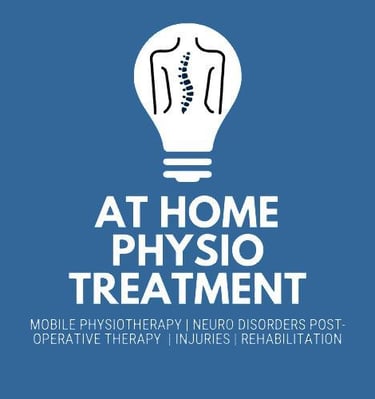Effective Physiotherapy Treatments for Sports Injuries
Sports Therapies, comprehensive guide is your roadmap
PHYSIOTHERAPY
8/9/20253 min read


Understanding Sports Injuries
Sports injuries are a common occurrence among athletes of all levels, ranging from amateur to professional. They can happen due to various reasons, including inadequate warm-up, improper technique, or excessive training. The consequences of these injuries can be severe, leading to pain, inflammation, and a prolonged recovery period. It is essential to understand the different types of sports injuries to seek appropriate treatment.
The Role of Physiotherapy in Recovery
Physiotherapy plays a crucial role in the rehabilitation of sports injuries. Physiotherapists specialize in the assessment and treatment of musculoskeletal issues, which makes them vital in aiding athletes’ recovery. Through tailored physiotherapy sessions, athletes can regain strength, improve flexibility, and enhance mobility, effectively returning them to their sport sooner. The treatment plan is usually designed based on the type and severity of the injury.
Common Physiotherapy Treatments for Sports Injuries
Physiotherapy treatments can vary significantly depending on the specific injury and the individual’s needs. Here are some of the most common treatments utilized:
Manual Therapy: This hands-on approach involves mobilization or manipulation of soft tissues and joints to reduce pain and improve function.
Exercise Therapy: Tailored exercise programs help enhance strength, flexibility, and endurance. These exercises are crucial for rehabilitation and prevention of future injuries.
Electrotherapy: Modalities such as ultrasound or electrical stimulation can promote healing and reduce pain and swelling.
Therapeutic Taping: Kinesiology taping can support injured areas and facilitate recovery while allowing for some movement.
Education and Advice: Physiotherapists provide valuable guidance on injury prevention strategies, ergonomic advice, and training techniques.
In conclusion, sports injuries can significantly impact an athlete's performance and overall well-being. However, effective physiotherapy treatments can provide the necessary support for recovery. By understanding the role of physiotherapy in treating sports injuries and recognizing the various treatment options available, athletes can ensure a safe and efficient return to their beloved sport.
What Is Sports Injury Physiotherapy and How Does It Differ from General Physiotherapy?
Sports injury physiotherapy is a focused branch of physical therapy that addresses exercise-related trauma and performance optimization, unlike general physiotherapy which treats a broad range of musculoskeletal conditions across age groups. By emphasizing rapid soft-tissue healing, proprioceptive retraining, and sport-specific biomechanics, it delivers tailored protocols for athletes.
What Types of Sports Injuries Are Commonly Treated by Sports Physiotherapists?
Sports physiotherapists manage a spectrum of athletic injuries, from soft tissue strains to complex ligament tears.
Before diving into treatments, this table shows key injury entities, their primary anatomical site, and typical physiotherapy focus:
Injury Entity
Affected Structure
Primary Rehab Focus
Sprain
Ligament
Ligament stability and controlled load
Strain
Muscle
Flexibility, graded strengthening
ACL Tear
Knee ligament
Neuromuscular control, ROM, strength
Meniscus Tear
Knee cartilage
Joint protection, muscle balance
Each injury demands targeted loading, movement analysis, and progressive exercise to restore stability before return to sport.
How Does Sports Physiotherapy Enhance Athletic Performance and Recovery?
Sports physiotherapy enhances recovery by reducing inflammation, restoring joint mobility, and strengthening functional movement patterns. Benefits include:
Accelerated tissue healing through manual mobilization and controlled loading.
Improved proprioception that reduces re-injury risk.
Optimized strength-endurance balance for peak performance.
Sport-specific drills that translate function into competitive settings.
By integrating modalities like TENS and dry needling with tailored exercise, athletes recover faster and return stronger.
When Should Athletes Seek Sports Injury Physiotherapy?
Early intervention within 48–72 hours of injury yield the best outcomes. Seek sports physiotherapy when you experience:
Persistent pain or swelling that limits movement.
Instability or “giving way” in joints.
Reduced range of motion impacting performance.
Post-surgical reinforcement following reconstructive procedures.
Prompt assessment and personalized treatment plans minimize downtime and lower long-term complication rates.
What Are the Most Common Sports Injuries and Their Physiotherapy Treatments?
Common athletic injuries concentrate on load-bearing joints and high-velocity muscle groups. Each demands specific rehab pathways to restore function and prevent recurrence.
How Are Knee Injuries Like ACL Tears and Meniscus Tears Treated with Physiotherapy?
Acute ACL and meniscus injuries require inflammation control, joint protection, and neuromuscular re-education.
Below is an EAV table detailing knee injury rehab protocols:
Entity
Attribute
Value
ACL Tear
Early Phase Goal
Control swelling via RICE and bracing
ACL Tear
Mechanism
Progressive ROM, isometric quadriceps activation
Meniscus Tear
Load Management
Partial weight-bearing with crutches for 2 weeks
Meniscus Tear
Strength Focus
Closed-chain exercises to strengthen quads and hamstrings
Rehabilitation advances from pain management into proprioceptive drills, culminating in sport-specific agility work to ensure safe return.
CONTACTS
WhatsApp Chat Line: +44 7376 030885


Copyright© At Home Physio Treatment 2025. All right reserved
